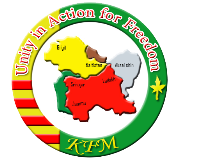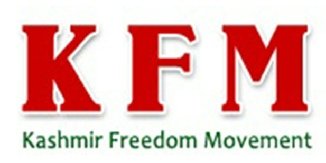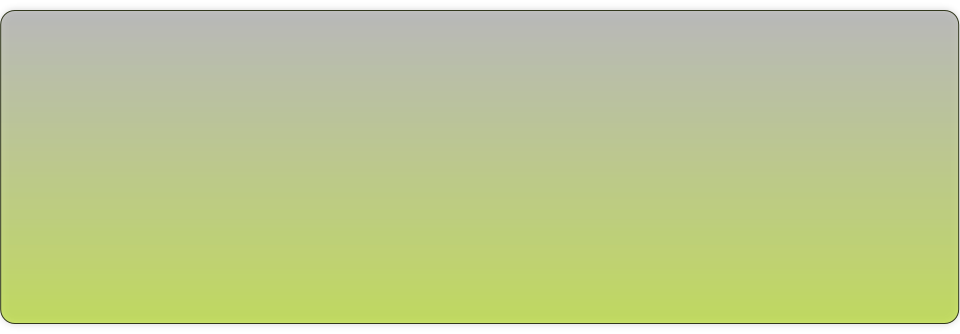Arranged in alphabetical order.
1. BALTI (SBALTI, BALTISTANI, BHOTIA OF BALTISTAN)**
[BFT] 270,000 in Pakistan or 90% of the Baltistan population (1992); 63,640 in India (1994 IMA); 333,640 in all countries. Primarily northeastern Pakistan: Baltistan District, Skardu, Rondu, Shigar, Khapalu, Kharmang, and Gultari valleys. Sino-Tibetan, Tibeto-Burman, Bodic, Bodish, Tibetan, Western. 87% to 100% lexical similarity among dialects, 78% to 85% with Purik. Chorbat is the most divergent dialect. Speakers call themselves and their language 'Balti'. Some Shina is used as second language, and Urdu proficiency is reported to be high in some places. Women and uneducated people have little knowledge of Urdu. Many Purik have shifted to Balti. Perso-Arabic script is the accepted one. Literacy in Urdu is 3% to 5%. Shi'ah Muslim. Bible portions 1903-1940. Needs survey.
BALTI (SBALTI, BALTISTANI, BHOTIA OF BALTISTAN)*
[BFT] 63,640 in India (1994 IMA); 270,000 in Pakistan or 90% of the Baltistan population (1992); 333,640 in all countries. Sino-Tibetan, Tibeto-Burman, Bodic, Bodish, Tibetan, Western. 87% to 100% lexical similarity among dialects, 78% to 85% with Purik. Chorbat is the most divergent dialect. Speakers call themselves and their language 'Balti'. Some Shina is used as second language, and Urdu proficiency is reported to be high in some places. Women and uneducated people have little knowledge of Urdu. Many Purik have shifted to Balti. Perso-Arabic script is the accepted one. Shi'ah Muslim. Bible portions 1903-1940. Needs survey.
2. BATERI*
[BTV] About 200 families in India. 25,000 to 45,000 in Pakistan (1983). Reported near Srinagar, Jammu, Kashmir. Indo-European, Indo-Iranian, Indo-Aryan, Northwestern zone, Dardic, Kohistani. Closer to Indus Kohistani than to Shina, but distinct from both. Survey needed.
3. BAZIGAR*
[BFR] 100 (1951). Gujarat, Himachal Pradesh, Jammu and Kashmir, Madhya Pradesh, Karnataka. Dravidian, Unclassified. Survey needed.
4. BHADRAWAHI (BADERWALI, BADROHI, BHADERBHAI JAMU, BHADERWALI PAHARI, BHADRAVA, BHADRI, BAHI)*
[BHD] 65,526 (1994 IMA). Jammu and Kashmir. Indo-European, Indo-Iranian, Indo-Aryan, Northern zone, Western Pahari. Dialects: BHALESI, PADARI. Pangi is reported to be nearly the same as Bhadrawahi. Survey needed.
5. BROKSKAT (BROKPA, BROKPA OF DAH-HANU, DOKSKAT, KYANGO)*
[BKK] 3,000 (1981 census). Along the Indus River in Ladakh and Kargil districts, northern Kashmir, villages around Garkhon, including Darchiks, Chulichan, Gurgurdo, Batalik, and Dah, and formerly in Hanu. Indo-European, Indo-Iranian, Indo-Aryan, Northwestern zone, Dardic, Shina. A very divergent variety of Shina. Minaro is an alternate ethnic name. 'Brokpa' is the name given by the Ladakhi for the people. 'Brokskat' is the language. Buddhism, traditional religion, some Muslim. Survey needed.
6. BURUSHASKI (BRUSHASKI, BURUSHAKI, BURUCAKI, BURUSHKI, BURUCASKI, BILTUM, KHAJUNA, KUNJUT)**
[BSK] 55,000 to 60,000 (1981). Hunza-Nagar area and Yasin area in Gilgit District, Northern Areas. Scattered speakers also in Gilgit, Kashmir, and various cities. Only a few in India. Language Isolate. Dialects: NAGAR (NAGIR), HUNZA, YASIN (WERCHIKWAR). People are called Burusho. Nagar and Hunza dialects have 91% to 94% lexical similarity. Werchikwar has 67% to 72% lexical similarity with Hunza, 66% to 71% with Nagar, and may be a separate language. It is geographically separated from the others. Werchikwar speakers are somewhat bilingual in Khowar. Knowledge of Urdu is limited among women and some others. 20% literate. Typology: SOV. Ismaili Muslim, Shi'a Muslim (Nagar). Needs survey.
7. CHILISSO (CHILISS, GALOS)**
[CLH] 1,600 to 3,000 (1992 SIL). All may not be speakers. Scattered families in the Koli, Palas, Jalkot area of the Indus Kohistan, east bank of the Indus River. Indo-European, Indo-Iranian, Indo-Aryan, Northwestern zone, Dardic, Kohistani. 70% lexical similarity with Indus Kohistani, 65% to 68% with Gowro, 54% with Bateri, 48% to 56% with Shina. 26% with Torwali, 25% with Kalami. Socially integrated with the Kohistani Shina, and most or all speak that as first or second language. Survey needed.
8. DOGRI-KANGRI (DOGRI, DHOGARYALI, DOGARI, DOGRI JAMMU, DOGRI PAHARI, DONGARI, HINDI DOGRI, TOKKARU, DOGRI-KANGRA)*
[DOJ] 2,095,280, including 2,005,000 Dogri (1994 IMA), 90,279 Kangri (1994 IMA). The home area is in the outer hills and strip of plain at their feet in Jammu and Kashmir between the Ravi and Chenab Rivers. Central states from north to south; West Bengal, Chandigarh, Himachal Pradesh (Kangra and Hamirpur districts). Indo-European,
Indo-Iranian, Indo-Aryan, Northern zone, Western Pahari. Dialects: BHATBALI, EAST DOGRI, KANDIALI, KANGRI (KANGRA), NORTH DOGRI, DOGRI. Palampur Kangri has 90% lexical similarity with Bilaspuri and Chambeali, 89% with Mandeali, 83% with Bhattiyali, 80% with MacLeod Ganj Gaddi. Spoken by all ages. Urdu (middle aged and older),
Hindi (school, shops. cities), and Panjabi (shops) are spoken as additional languages for certain purposes. Radio programs. 18% to 19% literate. Typology: SOV. Mountain slope, valley. Agriculturalists: rice, maize, millet, fruit. Altitude: 300 to 1,350 meters. Hindu, Muslim, Sikh, Buddhist, Christian. NT 1826, out of print. Bible portions 1883-1971.
9. GADDI (BHARMAURI BHADI, PAHARI BHARMAURI, PANCHI BRAHMAURI RAJPUT, GADDYALI, GADIALI, GADI)*
[GBK] 114,307 (1994 IMA). Himachal Pradesh (Chamba District, Brahmaur Tehsil and Holi Sub-Tehsils, and Uttar paradesh, Jammu and Kashmir. Higher elevations in summer, lower in winter. Indo-European, Indo-Iranian, Indo-Aryan,
Northern zone, Western Pahari. Dialect: BHARMAURI. 74% to 80% lexical similarity with Palamur Kangri, 79% with Chambeali, 67% to 73% with Mandeali. Hindi is used for instruction in school, in shops, and cities.Typology: SOV. Mountain slope. Nomadic shepherds. Altitude: 1,340 to 5,882 meters. Survey needed.
10. GARHWALI (GADHAVALI, GADHAWALA, GADWAHI, GASHWALI, GODAULI, GORWALI, GURVALI, PAHARI GARHWALI, GIRWALI)*
[GBM] 2,081,756 (1994 IMA). Kashmir, Uttar Pradesh. Indo-European, Indo-Iranian, Indo-Aryan, Northern zone, Garhwali. Dialects: SRINAGARIA, TEHRI, BADHANI, DESSAULYA, LOHBYA, MAJH-KUMAIYA, BHATTIANI, NAGPURIYA, RATHI, SALANI.50% to 75% literate. Mountain slope. NT 1827-1994. Bible portions 1876-1966.
11. GOWRO (GABARO, GABAR KHEL)**
[GWF] 200 or fewer (1990). Indus Kohistan on the eastern bank, Kolai area, Mahrin village. Indo-European, Indo-Iranian, Indo-Aryan, Northwestern zone, Dardic, Kohistani. 65% to 68% lexical similarity with Chilisso, 62% with Indus Kohistani, 60% with Bateri, 40% to 43% with Shina, 25% with Torwali, 24% with Kalami. Different from Gawri, an alternate name for Kalami. Shina is used as second language. Survey needed.
12. GUJARI (GUJURI, GUJURI RAJASTHANI, GUJER, GOJRI, GOGRI, KASHMIR GUJURI, GOJARI, GUJJARI)**
[GJU] 300,000 or more in Pakistan (1992) including 2,910 in Chitral (1969), 20,000 in Swat Kohistan (1987), 200,000 to 700,000 in Azad Jammu and Kashmir (1989); 538,691 in India (1994 IMA); 2,000 or fewer in Afghanistan (1994); 840,000 or more in all countries. Throughout northern Pakistan, mainly in the east in Hazari District, NWFP, in Kaghan Valley, Azad Jammu, and Kashmir. Scattered communities in southern Chitral, Swat Kohistan, and Dir Kohistan, NWFP, and Gilgit Agency, Northern Areas. Indo-European, Indo-Iranian, Indo-Aryan, Central zone, Rajasthani, Unclassified. Dialects: WESTERN GUJARI, EASTERN GUJARI. 64% to 94% lexical similarity among dialects. Eastern Gujari appears closer to Northern Hindko or Pahari-Potwari. Western Gujari speakers appear to understand the Eastern dialect better than vice versa. Comparison with India varieties is needed. It is reported that most Gujars in Pakistani Punjab have shifted to Panjabi. Spoken in some pockets of Punhab by immigrants from elsewhere. Some speakers move with herds up in summer, down in winter. Radio broadcasts, some unpublished literature. Pastoralists, dairy, nomadic; some settled agriculturalists. Muslim. Needs survey.
· GUJARI (GUJURI, GUJER, GUJAR, GUJJARI, GURJAR, GOJRI, GOGRI, KASHMIR GUJURI, RAJASTHANI GUJURI, GOJARI)*
[GJU] 538,691 in India (1994 IMA); 300,000 or more in Pakistan (1992); 2,000 or fewer in Afghanistan (1994); 840,000 or more in all countries. Himachal, Madhya Pradesh, Uttar Pradesh, Jammu, Kashmir, Rajasthan. Indo-European, Indo-Iranian, Indo-Aryan, Central zone, Rajasthani, Unclassified. Dialect: AJIRI OF HAZARA. 5% to 15% literate. Pastoralists, nomadic. Work in progress.
13. KASHMIRI (KASCHEMIRI, CASHMIRI, CASHMEEREE, KACMIRI, KESHUR)**
[KSH] 105,000 in Pakistan (1993); 4,381,000 in all countries. Jammu and Kashmir, south of Shina. Also in India and United Kingdom. Indo-European, Indo-Iranian, Indo-Aryan, Northwestern zone, Dardic, Kashmiri. Institute of Kashmir Studies in Muzaffarabad does some language promotion. Radio broadcasts. Attitude of people toward own language is poor. Transitional dialects to Panjabi. Kashtawari dialect is standard, other dialects are influenced by Dogri. May need different script for Pakistan. Bible 1899, out of print. NT 1821-1884. Bible portions 1921-1954. Survey needed.
13· KASHMIRI (KESHUR, KASCHEMIRI, CASHMIRI, CASHMEEREE, KACMIRI)*
[KSH] 4,161,000 in India (1994 IMA); 105,000 in Pakistan (1993); 115,000 in United Kingdom (1991); 4,381,000 in all countries. Jammu and Kashmir (52.29% of the population), Punjab, Uttar Pradesh, Delhi, Kashmir Valley. Indo-European, Indo-Iranian, Indo-Aryan, Northwestern zone, Dardic, Kashmiri. Dialects: BAKAWALI, BUNJWALI, STANDARD KASHMIRI (KASHTAWARI), KISHTWARI, MIRASKI, POGULI, RAMBANI, RIASI, SHAH-MANSURI, SIRAJI OF DODA, SIRAJI-KASHMIRI, ZAYOLI, ZIRAK-BOLI. Literacy: men 36.29%, women 15.88%; rural 21.63%, urban 45.56% (1981 census). Another source says 5% literate in Kashmiri, 5% in Urdu. Literature can be traced to the 1400's, and poetry is important. Persian-based script. Not used in primary education. Urdu and English are used as second languages. National language. Typology: SVO. Mountain slope, valleys. Agriculturalists: rice, wheat, maize; craftsmen (weaving, carpets, carving, furniture, papier mache). Altitude: 6,000 feet. Muslim, Christian. Bible 1899, out of print. NT 1813-1884. Bible portions 1813-1954. Survey needed.
14. KHASI (KAHASI, KHASIYAS, KHUCHIA, KASSI, KHASA, KHASHI)*
[KHI] 824,000 in India (1994 IMA); 85,088 in Bangladesh (1961 census); 909,000 in all countries. Assam, Khasi-Jaintia hills, Meghalaya, Jammu and Kashmir, Manipur, Punjab, Uttar Pradesh, West Bengal. Austro-Asiatic, Mon-Khmer, Northern Mon-Khmer, Khasian. Dialects: BHOI-KHASI, JAINTIA, LYNG-NGAM, NONGTUNG, KHASI, WAR. Amwi is a separate language (B. Comrie 1989). Typology: SVO. Bible 1891. NT 1831-1991. Bible portions 1816-1891.
15. KISHTWARI (KISTWALI, KASHTWARI, KATHIAWARI)*
[KGA] 19,831 (1994 IMA). Jammu and Kashmir. Indo-European, Indo-Iranian, Indo-Aryan, Northwestern zone, Dardic, Kashmiri. Survey needed.
16. LADAKHI (LADAPHI, LADHAKHI, LADAK, LADWAGS)*
[LBJ] 97,000 (1994 IMA) including 29,800 to 33,300 Shamma (Voegelin and Voegelin 1977.328). Jammu and Kashmir, Ladakh District. Leh is in Leh and surrounding areas. Zanskari is in Zanskar Tehsil to the south of Leh in Ladakh District. Changtang is in the Changtang region east and southeast of Leh to the Tibetan border. Shamma is west of Leh along the Indus Valley and to the south of Khaltse. Nubra is in Nubra Tehsil north of Leh. 250 villages and hamlets. Also possibly in Tibet. Sino-Tibetan, Tibeto-Burman, Bodic, Bodish, Tibetan, Western, Ladakhi. Dialects: LEH (CENTRAL LADAKHI),
ZANGSKARI LADAKHI (ZASKARI, ZANGSKARI), CHANGTANG LADAKHI (BYANGSKAT, BYANSKAT, CHANGS-SKAT, RONG, RUPSHU, STOTPA, UPPER LADAKHI), SHAMMA (SHAM, SHAMSKAT, LOWER LADAKHI), NUBRA LADAKHI. Men are 36% literate, women 12% in Hindi, Urdu, Tibetan, or English (1991). Tibetan
script is used. It is difficult to use, but desired by the people. Perhaps 30% to 40% intelligibility with Tibetan. Leh is used as the medium of communication. Leh speakers understand Zanskar and Changtang at more than 90% on recorded text tests. Many people in urban areas have some bilingualism in Urdu, Hindi, or English, but rural speakers are mainly monolingual in Ladakhi. Speakers of all ages. Typology: Non-tonal. Mountain valleys. Agriculturalists: wheat, barley; pastoralists: yaks, goats, sheep (cashmere wool); cottage industries: weaving, jewelry making, religious artifact production. Altitude: 8,250 to 16,500 feet. Buddhist, Muslim, Christian. Bible portions 1904-1919.
17. PAHARI-POTWARI (POTWARI, POTHOHARI, POTOHARI, CHIBHALI, DHUNDI-KAIRALI)**
[PHR] Murree Hills north of Rawalpindi, and east to Azad Kashmir. To the north in the lower half of the Neelum Valley. Poonchi is east of Rawalakot. Potwari is in the plains around Rawalpindi. Punchhi and Chibhali are reported to be in Jammu and Kashmir. Indo-European, Indo-Iranian, Indo-Aryan, Northern zone, Western Pahari. Dialects: PAHARI (DHUNDI-KAIRALI), POTHWARI (POTWARI), CHIBHALI, PUNCHHI (POONCHI). Pahari means 'hill language' referring to a string of divergent dialects, some of which may be separate languages. 76% to 83% lexical similarity among varieties called 'Pahari', 'Potwari', and some called 'Hindko'in Mansehra, Muzzaffarabad, and Jammun. A dialect chain with Panjabi and Hindko. Closeness to western Pahari is unknown. Muslim. Survey needed.
· PAHARI, KULLU (KULUI, KULLUI, KAULI, KULU BOLI, KULU PAHARI, PAHARI, PAHARI KULLU, PHARI KULU, KULVI, KULLUI, KULWALI)*
[KFX] 103,857 in Kullu (1994 IMA); 2,069,531 all Pahari (1994 IMA). Himachal Pradesh, Punjab. Indo-European, Indo-Iranian, Indo-Aryan, Northern zone, Western Pahari. Dialects: INNER SIRAGI (INNER SERAJI, SIRAGI, SIRAJI, SARAJI), KUKUI, SAINJI. Dialects are inherently intelligible. Limited bilingualism in Hindi. Radio programs in Kului. Inner Siraji is apparently different from Siraji-Kashmiri. Bible portions 1932-1980. Work in progress.
· PAHARI, MAHASU (MAHASUI)
[BFZ] 500,000 (1992 estimate); 3,976 in Baghati (1961 census), 23,700 in Sirmauri (1994 IMA); 2.069,531 all Pahari (1994 IMA). Himachal Pradesh, Shimla (Simla) and Solan districts. Indo-European, Indo-Iranian, Indo-Aryan, Northern zone, Western Pahari. Dialects: LOWER MAHASU PAHARI (KIUNTHALI, SIRMAURI, BAGHATI, HANDURI, BAGHLIANI), UPPER MAHASU PAHARI (SHIMLA SIRAJI, SODOCHI, RAMPURI, ROHRURI). The Kiunthali
education and jobs outside the area.Brokskat is quite divergent. Gurezi and Dras are Sunni and Shi'a Muslim. Bible portions 1929. Survey needed.





